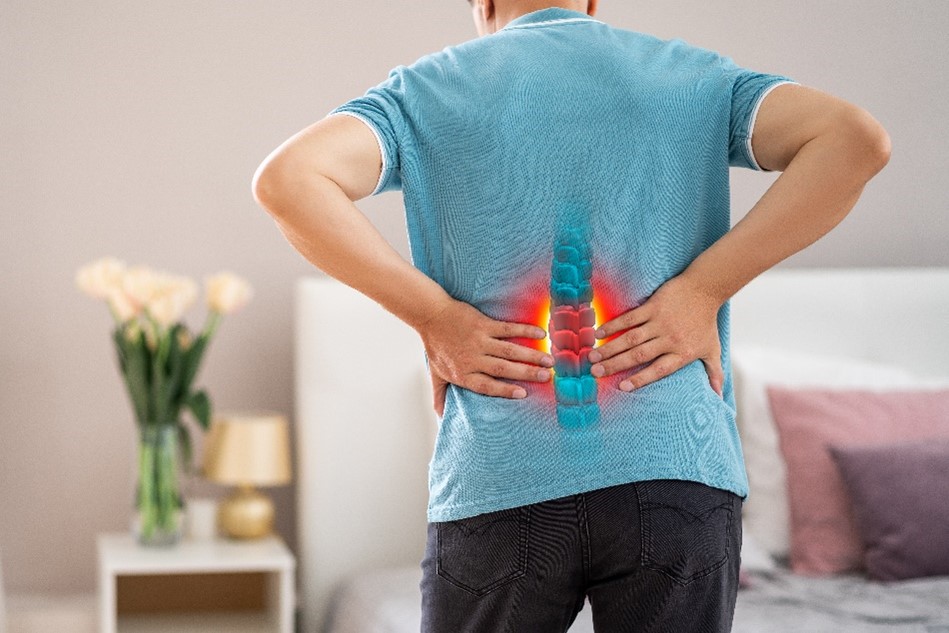What is a Slipped Disc?
A herniated disc or slipped disc, happens in your spine. Here's the breakdown:
Spine: It's the bony column running down your back, providing structure and protecting your spinal cord.
Discs: These are flat, rubbery cushions between your vertebrae (spinal bones). They act like shock absorbers and allow your spine to bend and twist.
Herniation: The soft, jelly-like center of the disc pushes through a tear in the tougher outer casing.
This bulge can press on nearby nerves, causing the pain, numbness, and weakness associated with a herniated disc.
Symptoms of a Slipped Disc
Sharp pain: Can be intense and radiate to other areas like the leg (lower back) or arm (neck).
Numbness or tingling: You might feel a loss of sensation in the affected area.
Muscle weakness: Difficulty lifting objects or performing activities due to weak muscles.
Sciatica (lower back only): Pain radiating down the back of the leg and into the foot.
Causes of Slipped Discs
A slipped disc happens when the outer ring weakens or tears, allowing the inner portion to slip out. This can occur due to age-related wear and tear, lifting heavy objects, or twisting motions. Overweight individuals and those with physically demanding jobs are at increased risk. Weak muscles and a sedentary lifestyle can also contribute to the development of a slipped disc. As you age, discs lose some protective water content, making them more prone to slipping. Slipped discs are more common in men than women.
Diagnosis
Doctors diagnose slipped discs through a physical exam, checking nerve function, muscle strength, and pain response to movement. They will also review your medical history and symptoms. Imaging tests like X-rays, CT scans, MRI scans, and discograms help identify damaged areas in the spine.
Treatment Options
Treatment ranges from conservative to surgical, depending on the severity of discomfort and the extent of disc protrusion. Most people find relief through exercise programs that stretch and strengthen the back and surrounding muscles. Physical therapists can recommend specific exercises to reduce pain. Over-the-counter pain relievers and avoiding heavy lifting can also help. Remaining active through stretching or low-impact activities like walking is essential to prevent muscle weakness and joint stiffness.
For persistent pain, doctors may prescribe muscle relaxers, narcotics, or nerve pain medications like gabapentin or duloxetine. Surgery may be recommended if symptoms don’t subside within six weeks or if muscle function is affected. Procedures include microdiskectomy, where the damaged portion of the disc is removed, or more extensive surgeries like disc replacement or spinal fusion.
Prevention
While preventing a slipped disc entirely may not be possible, you can reduce the risk by:
- Using safe lifting techniques (bend from your knees, not your waist).
- Maintaining a healthy weight.
- Avoiding prolonged sitting; stretch periodically.
- Doing exercises to strengthen back, leg, and abdominal muscles.
While a herniated disc can be uncomfortable and limit your activities, the good news is that most people improve with non-surgical treatments like rest, medication, and physical therapy.



